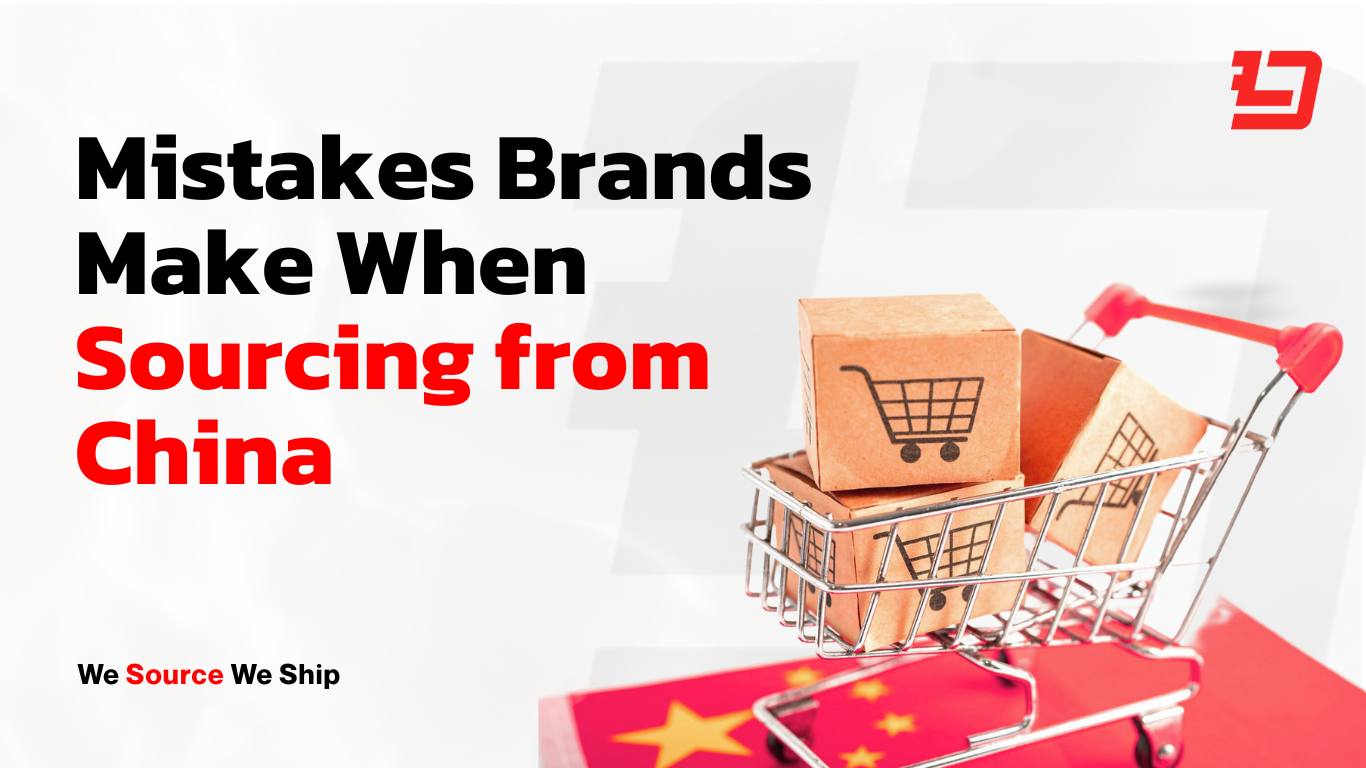eCommerce brands are facing one of their toughest years. The U.S. government has reimposed and expanded tariffs on goods imported from China, with rates reaching as high as 145%, depending on the product category. Categories such as cosmetics, electronics, apparel, and household goods are among the most affected.
This, combined with ongoing volatility in global freight costs and stricter customs enforcement, has created a perfect storm for brands relying on overseas suppliers. As of Q1 2025, shipping costs remain 22% higher than pre-pandemic levels, and customs delays have increased, causing strain on inventory flow and customer satisfaction.
One of the most effective strategies emerging in 2025? Using U.S.-based warehouses to absorb shocks, reduce delays, and deliver faster.
Why Are Tariffs Affecting eCommerce Brands in 2025?
Increased Import Costs
Tariffs directly increase the cost of goods sold (COGS). Many sellers have passed these costs onto customers, but that strategy is becoming unsustainable.
To understand the impact, it’s important to know how tariffs are calculated and applied:
- Ad Valorem Tariffs: The most common type, calculated as a percentage of the imported goods’ value.
- Specific Tariffs: Fixed amounts charged on specific quantities (per pound, per unit, etc.).
- Compound Tariffs: A combination of both ad valorem and specific tariffs.
For ecommerce sellers, ad valorem tariffs are the most common concern, as they directly increase the cost basis of imported products.
How Tariffs Affect Ecommerce Profit Equations
Tariffs impact your profit equation in multiple ways:
Profit = Revenue – (COGS + Tariffs + Shipping Costs + Operating Expenses)
When tariffs increase, they directly compress margins unless other variables change. According to 2025 data from the National Retail Federation, the average margin compression for ecommerce businesses facing increased tariffs is between 3-7% of total revenue.
A practical example: If you import a product that costs $10 and sell it for $25 (60% margin), a 15% tariff reduces your margin to 45% – a 25% reduction in profitability per unit.
Uncertainty in Trade Policy
Trade policy in 2025 remains volatile. With frequent policy shifts and new tariffs proposed quarterly, eCommerce brands are seeking more stable, localized options to maintain fulfillment speed and margin predictability.
Direct Shipping Cost Comparison: China vs. US Fulfillment
Understanding the actual cost differences between shipping directly from China versus using US-based warehouses is crucial for making informed decisions. Below is a cost comparison using current 2025 rates for common ecommerce scenarios:

How US Warehouses Help Mitigate Tariffs
1. Avoid Paying Tariffs on Every Order
By bulk-shipping inventory into the U.S. and storing it domestically, sellers can pay import duties once—at lower freight rates—and avoid additional handling or re-import fees on each customer order.
This creates a significant cost advantage over direct international fulfillment, where duties and courier charges are applied per package.
2. Faster Delivery = Better Conversions
With U.S.-based fulfillment centers, delivery times are significantly reduced. Most 3PLs now offer 2- to 4-day shipping across the continental U.S.
Faster shipping boosts conversion rates and improves customer satisfaction—especially critical in a competitive 2025 market.
3. Predictable and Streamlined Operations
Managing fulfillment from within the US means fewer surprises at customs, fewer shipping delays, and easier tracking. In 2024, 35% of international eCommerce shipments faced customs delays due to incomplete paperwork or tariffs, compared to just 2% for domestic shipments
What Kind of eCommerce Sellers Should Use U.S. Warehouses?
Not all eCommerce brands are equally suited to utilizing U.S. warehouses. While this fulfillment strategy offers clear advantages, it’s important to consider whether your business model aligns with the benefits U.S. warehouses can provide.
1. Brands with High Product Volumes
If you’re selling products in large quantities, especially seasonal items or high-demand goods, storing inventory in U.S. warehouses helps avoid expensive international shipping on every single order. Bulk importing allows you to take advantage of tariff savings and reduces operational friction.
2. U.S.-Based Customers
For businesses where 60%+ of customers are in the US, domestic warehousing provides clear advantages in shipping speed, cost, and customer satisfaction. The 2025 DHL Ecommerce Study found that US-based fulfillment for predominantly US customers improved:
- Delivery times by 75%
- Customer satisfaction scores by 31%
- Repeat purchase rates by 24%
3. Amazon Sellers
For Amazon sellers, using U.S. fulfillment centers can streamline FBA prep and avoid Amazon’s strict shipping requirements, reducing the likelihood of penalties or delays. Domestic fulfillment can also improve the speed of FBA shipments and optimize inventory levels across Amazon’s multiple warehouses.
4. Brands Navigating International Tariffs
If you’re importing products from regions like China and facing rising tariffs, U.S. warehouses allow you to pay the duty upfront and avoid the high cost of duties on individual packages. This works especially well for high-volume sellers looking to optimize logistics and reduce margin erosion.
5. Subscription Box Services
If you’re running a subscription box service, U.S. warehouses can streamline your fulfillment process. Storing your inventory domestically allows for quicker and more efficient packing and shipping of subscription boxes, ensuring that deliveries reach your customers on time. It also reduces shipping costs per box, allowing you to offer more competitive pricing while maintaining high-quality service.
6. Wholesale and Bulk Distributors
For eCommerce brands that operate as wholesale distributors or sell bulk quantities to businesses, U.S. warehouses provide a cost-effective solution to handle large shipments. Bulk storage in domestic fulfillment centers enables you to process orders more quickly and manage large quantities of inventory with greater ease.
This approach also minimises freight costs per unit when fulfilling large orders or regular stock replenishments for B2B clients.
Lansil Global’s U.S. Fulfillment Network Strategy
At Lansil Global, we understand the challenges eCommerce brands face when navigating rising tariffs and the complexities of international logistics. That’s why we’ve tailored our U.S. Fulfillment Network Strategy to help brands thrive.
Strategic Warehouse Locations
We’ve established warehouses in key locations across the U.S. — Nevada (West Coast) and Pennsylvania (East Coast) — to ensure optimal coverage and faster delivery across both coasts. This strategic placement allows us to reduce shipping times, improve efficiency, and help our clients manage their inventory better.
Comprehensive Tariff Solutions
Our U.S.-based fulfillment services help brands avoid paying tariffs on every individual order by consolidating shipments into bulk imports. This approach not only lowers tariffs per unit but also enhances supply chain predictability, helping you stay ahead of tariff-related changes.
Streamlined Logistics and Cost Reduction
With Lansil Global, you can reduce logistics costs through smarter inventory management and shipping consolidation. Our advanced warehousing and fulfillment technology allows for seamless integration with your eCommerce platforms, ensuring that orders are processed quickly and efficiently, no matter where your customers are.
Flexible Storage Solutions
We offer scalable storage solutions to accommodate fluctuating inventory levels. This flexibility allows you to adjust based on seasonal demand without the burden of excessive storage fees. With Lansil Global, you only pay for the space you need when you need it.
At Lansil Global, we’re committed to helping eCommerce brands navigate these challenges and scale their operations with reliable and cost-effective solutions. Contact us today to learn how our U.S. Fulfillment Network can help you thrive in 2025.









